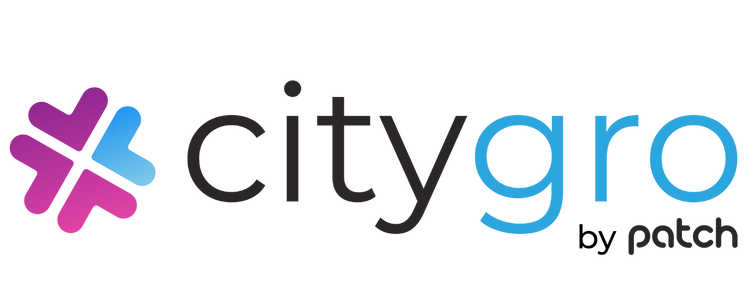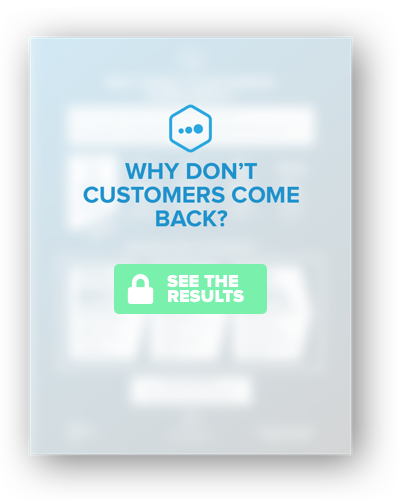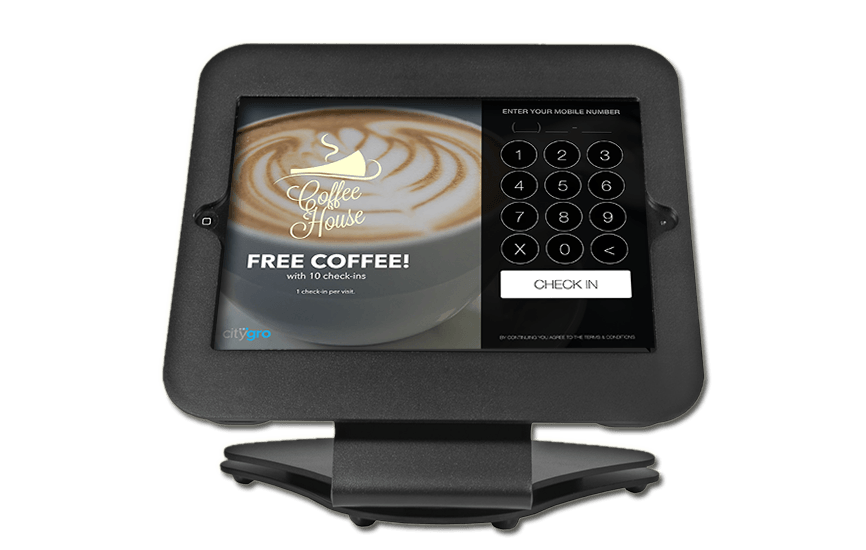CGL: Improving The User Experience of a Retention Program
Transcript:
Eric: Welcome everyone to CityGro live. We’re excited for those that are joining in with us. We’ve got an exciting topic for today. Today we have Ben, CTO here at CityGro, joining us to share all of his great insights with us. So the topic for today is “Improving the user experience for your retention program” and so we’re going to go over some different ideas and different aspects of how you can improve that user experience and then at the end, and I know this is what Ben’s most excited about, we’re going to talk about three new features that we have in CityGro that are ready or close to being ready to be used. So we’ll go ahead and start. As always, if you have any questions, feel free to leave them in the comments and we’ll answer those at the end of CityGro live. But for now let’s, let’s just dive right into it in regard to retention programs. So maybe let’s start basic or start simple. What do we mean by retention programs?
Ben: A retention program is any program really that retains right? That brings customers back. Which is what we try to do here at CityGro. So, it could be a loyalty program offering incentives for customers to return, gives them notifications that remind your customers to come back. Anything that drives customers to come in for the first time, or come back.
Eric: I think a lot of times we look at it as rewards and loyalty programs, but I think you touched on a good point. It’s not always loyalty. It’s anything that really has a goal of retaining customers. Right? So it could be an email program or text program. There’s a number of things that go into that besides just rewards programs. So what are some of the typical pitfalls of the user experience or where do businesses get held up on their retention program?
Ben: A lot of the struggles that we see stem from a few different things. Employee training is one big part of retention programs not taking off. So employees not asking customers to check in on the kiosk or to participate in the loyalty program is a huge one. Sometimes it’s just plain inconvenient. I’m not saying that apps are a bad thing to have for your business, but sometimes it’s just, “Oh, I have to download another app and I already have six pages of apps on my phone. And I don’t know where a lot of the ones after the first page are anyway.”
Eric: Maybe another inconvenience would be like; you’re just asking for way too much information from a customer to be part of a retention program. So customers just say, “Oh, this is inconvenient. I’m going to give up or not finished the process.”
Ben: If I’m going to have to fill out three pages of information; it’s hard enough to just type in my phone number sometimes, and maybe my name and my email address. Any information that you don’t really need, if you’re not going to use to market from, you probably won’t need to ask for. Just leave that off. We have capabilities in our kiosk, for example, to ask for a little bit more every time. So that’s one potential thing to do.
Eric: Any other downsides or various difficulties there?
Ben: Yeah, Not having faith in the retention system is a big one. There are some systems that I’ve used that I really wonder if I’m getting the points that it says I’m getting, because I don’t get an immediate feedback response when I earn points. There’s not really a way that I can go back and check the account for all the points that I’ve earned.
Eric: So you lose trust.
Ben: Yeah, I don’t have that trust in those loyalty programs. That, and then maybe not feeling like I can reach the end goal of the loyalty program. If it’s going to take 100,000 points to get a free ice cream cone and I get Ten every time, That’s not going to play a role to influence whether I’m retained or not.
Eric: It’s just so far out there to the end user has no desire to be part of it. It needs to be achievable.
Ben: Exactly. And I mean we’ve had customers that have used “Win a trip to Tahiti!” or something, kind of as a joke, it’s not actually really part of the loyalty program… that’s just a way out there reward that you can get. But then they have other things that take five points to get.
Eric: So just to kind of recap, as far as typical pitfalls or difficulties with the user experience; Employees… not having employees buy in or be trained on how the retention program works. And it’s inconvenient to the customer so they don’t want to be part of it just because of the inconvenience. And then lastly, we talked about trust and achievability with different rewards that are part of the retention program. So with those being some of the difficulties with retention programs, what would you suggest as ways to make it better for improving that user experience?
Ben: I would say overall make it simple. The loyalty program just needs to be simple. We’ve got customers still that insist on having two or three punch cards and, we can accommodate that, but we’ve seen a lot more success with a lot less.
Eric: It just gets confusing, right?
Ben: It’s confusing. And so just having it be simple is key. Quality incentives are really important as well for a good potential program. You want to have something that your customers want or else they’re not going to be motivated to return. Sometimes offering a small drink with the purchase of five entrees isn’t quite enough to drive customers in, for example. So quality incentives are key
Eric: And those are… sorry to cut you off… Those are things you can probably test as well. Maybe you start with something. If you don’t see a lot of people engaging or it’s just not working for you can make changes to it. Right? Testing those incentives and what really motivates the customer.
Ben: We’ve got a great interface for managing our kiosk system… our loyalty system that is getting actually more simple with the release of our new portal that just came out a couple of weeks ago. We had to put in a plug for that. We are really excited there. But we’ve got a great interface for doing that. So you can delete offers if they’re not working very well. You can create new ones. Yeah, AB testing is key.
Eric: Absolutely. Anything else that you could suggest for improving?
Ben: Yeah. Training your employees obviously, that was one of the pitfalls that I mentioned. But the last thing is getting your loyalty program integrated as much as possible to your workflow or your checkout flow, basically. This would include integrating with your POS (Point Of Sale) system if your POS system is willing. We actually are very open to integrating at CityGro. Most of the roadblocks that we face as far as integration goes are being told (to us) by the POS systems. But it’s just that they don’t have as much incentive. So talking to them about that (integrating) and really prodding them to want to integrate is a big help in being able to improve the user experience. But also integrating it into your normal checkout flow. Making it just a routine thing that people do. Just having the whole process down because a lot of the times with checkout you want to run people through that process as fast as possible.
Eric: So there’s not a bottleneck. You’re not holding up the line.
Ben: Exactly. So yeah, you don’t want to ask for people’s phone number two or three times during the checkout process. When you ask for it on the kiosk and then you ask again to type it into your POS system… Having it integrated into your workflow as much as possible and decreasing that (redundancy) is a huge help.
Eric: So you answered with a few things: Integrations with your POS system as a potential possibility. And then the other one, which I think is extremely important, is just integrating within your process. Which kind of falls back on properly training employees, making sure they understand that process and they’re actually fulfilling what you set in place. Well, I think that covers it. Any last suggestions you have for improving the user experience?
Ben: No, not right now.
Eric: Okay. Well, let’s jump into what you were really excited about. So three new features either coming to CityGro or they’re here. What do you want to talk about there?
Ben: So last time I did this, I talked a lot about things that we were going to build…
Eric: And how long ago was… that was a month, two months ago?
Ben: Two, maybe even more than that. It was a while. And, and more exciting is talking about what we actually have done. And either being Beta tested right now, which means it’s being used by customers in a lot of situations or really close. So my most favorite feature that we’ve ever built in CityGro is what we call automations.
Eric: That’s saying a lot. Your most favorite of anything…
Ben: Favorite. I’ve been here a while and that’s my most favorite. And automations is basically a workflow that lets you say, “When this happens, then do this:”. And it’s basically a drag and drop. So you drag a block that says, “When somebody finishes checking in on a kiosk, then do this:”, like send them a message, or send them an email, or activate an offer, or… there’s just a whole list of things that can be done. And so it’s basically a visual way to tell the system that you want to do this, this, and this. You can make it wait a long period of time in between when something happens, you can make it start up at certain times of day if you want, like if you want to incentivize everybody on a Monday that has ever checked in or checked in with the last week because Monday’s are least busy day, you could do that with automations. So it makes it a really easy way to customize a lot of CityGro’s capabilities that you otherwise couldn’t do.
Eric: So you mentioned a real simple way. You mentioned drag and drop, kind of putting that flow together based on automations or drip campaigns or however you want those to be set up.
Ben: Exactly. So yeah, I mean there’s a lot of stuff we’ll be adding to it in the future that accentuates its effectiveness in marketing. That’s one really exciting feature…
Eric: The most exciting.
Ben: (Laughing) Yeah, I gave you the best, it’s all downhill from here.
Eric: Still great features. What are two of the other features that we have?
Ben: Another one we have is the new waiver system. We’ve taken this a long way from where it’s been before. This is also in Beta right now. It’s being used by some of our customers and they’re testing it out. We’re ironing out all the glitches in it and then we’ll release it publicly as soon as it’s ready to go here in the next month or so. But it’s working great. We have a new… basically, you upload a PDF of your waiver, if you want or you can start from scratch. Either way and then you just drag and drop fields onto that pdf that you want to have the user fill out.
Eric: So one of the biggest highlights there is it’s just way easier to get it started within our system. Right? Instead of having to build it from scratch. You’re just putting your existing waiver in and then drag and drop like you mentioned.
Ben: Exactly. And it integrates with our kiosk, which is the coolest thing. So if you have a kiosk at your business that you’re having people sign waivers on, but you want to give them the opportunity to do all that before they visit your business. You can easily email them the waiver and the kiosk will only ask for that waiver if you haven’t filled it out. So it’s really cool.
Eric: Cool. One last feature.
Ben: One last feature. I’d say the inbox feature on CityGro, it’s a two-way messaging feature that makes it possible for you to respond to incoming messages.
Eric: So businesses can actually have a conversation with their customers?
Ben: Exactly, yes. You can have your drip campaign going all the time and you can make it feel like a really personalized message to the user, have their name in it or whatever, and then they can actually respond to that message and it will come into your inbox and then you can see everything that you haven’t read. You can pull up your whole message history. You can look at all the past events when they’ve changed data fields when they’ve redeemed offers, everything like that.
Eric: Gives a lot more insight and connection with customers. Cool. A lot of exciting features. So we’ve highlighted just three. So automations is Ben’s favorite. New capabilities with automations, our new waiver system, and then lastly the inbox, so two-way communication. Cool. Well, that’s all we have for today. If you have any questions… I’m looking through right now. It doesn’t look like we have any questions that are coming in right now. If you have any questions, feel free to leave them on facebook and we’ll reply to them as soon as we can. Look forward to having you join us next week. Thanks.






 Get this section from Jon. Get this section from Jon. Get this section from Jon. Get this section from Jon. Get this section from Jon. Get this section from Jon. Get this section from Jon. Get this section from Jon. Get this section from Jon.
Get this section from Jon. Get this section from Jon. Get this section from Jon. Get this section from Jon. Get this section from Jon. Get this section from Jon. Get this section from Jon. Get this section from Jon. Get this section from Jon.

